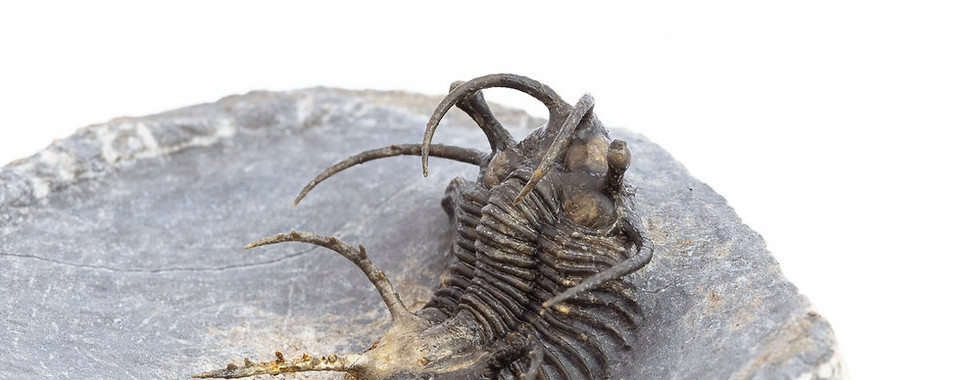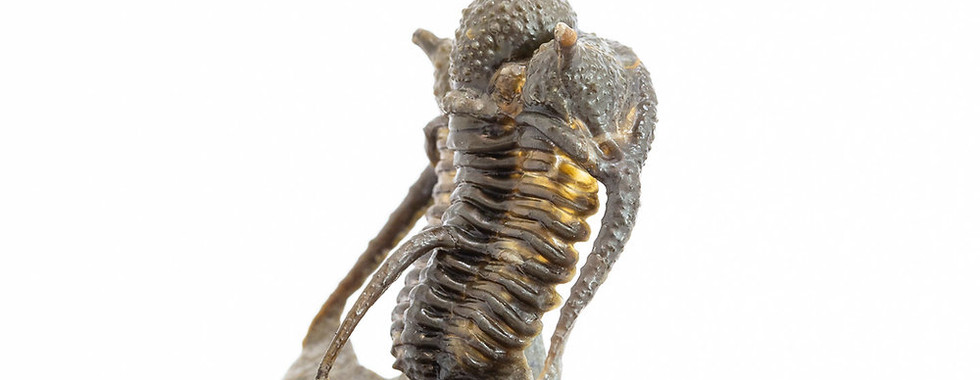Do you know what trilobites were?
- davidochoa1989
- Sep 21, 2022
- 2 min read
To talk about trilobites, we must go back to the Paleozoic era. These are arthropods that inhabited the seas specifically from the early Cambrian to the late Permian, that is, from 521 million years ago to 252 million years ago.
Their name (from the latin 'Three lobes') is due to the 3 segments in which they were divided longitudinally: a central lobe called the Axial Lobe that was flanked on both sides by the Right Pleural Lobe and the Left Pleural Lobe, as can be seen in the following image:

As we can see in the image, the trilobites were also divided transversely into 3 sections, called Cephalon (or head), Thorax and Pygidium.
Trilobites had legs, antennae, and other fine structures that were more difficult to fossilize and are therefore rarely preserved today. However, the appearance of the trilobites was similar to the following:

One of the most outstanding aspects of trilobites is the composition of their exoskeleton, made up of calcium phosphate and calcium carbonate in the form of calcite. This characteristic has allowed them to fossilize very easily, since trilobites were naturally made up of 'rock'. Thanks to this and to the fact that they inhabited the earth for practically 300 million years, they are currently one of the most widely known fossil organisms. Its fossil remains can be found on all continents in the petrified sediments of those oceans.
As a curiosity, note that trilobites in order to grow had to change their armor, due to its great rigidity. Currently, fossilized molts are preserved, as well as trilobites that died in the molting process.
After surviving 2 extinctions that caused a drastic decline in many trilobite families, they finally disappeared in the largest extinction in Earth's history, the Permian-Triassic mass extinction, in which 90% of marine species and the 70% of terrestrials species died. Studies explain that when the ecosystems of the seabed collapsed, the trilobites were left without food. This, added to the acidification of the ocean floor, prevented them from correctly forming their calcite exoskeletons.
We invite you to visit our Trilobite collection to learn more about these fascinating specimens and their several species. Each piece is properly documented, classified and can be shipped anywhere in the world.
If you want to see faithful illustrations of what the seas were like in the Paleozoic era, I invite you to see the work of our friends at Mighty Fossils (www.mightyfossils.com)


































Comments